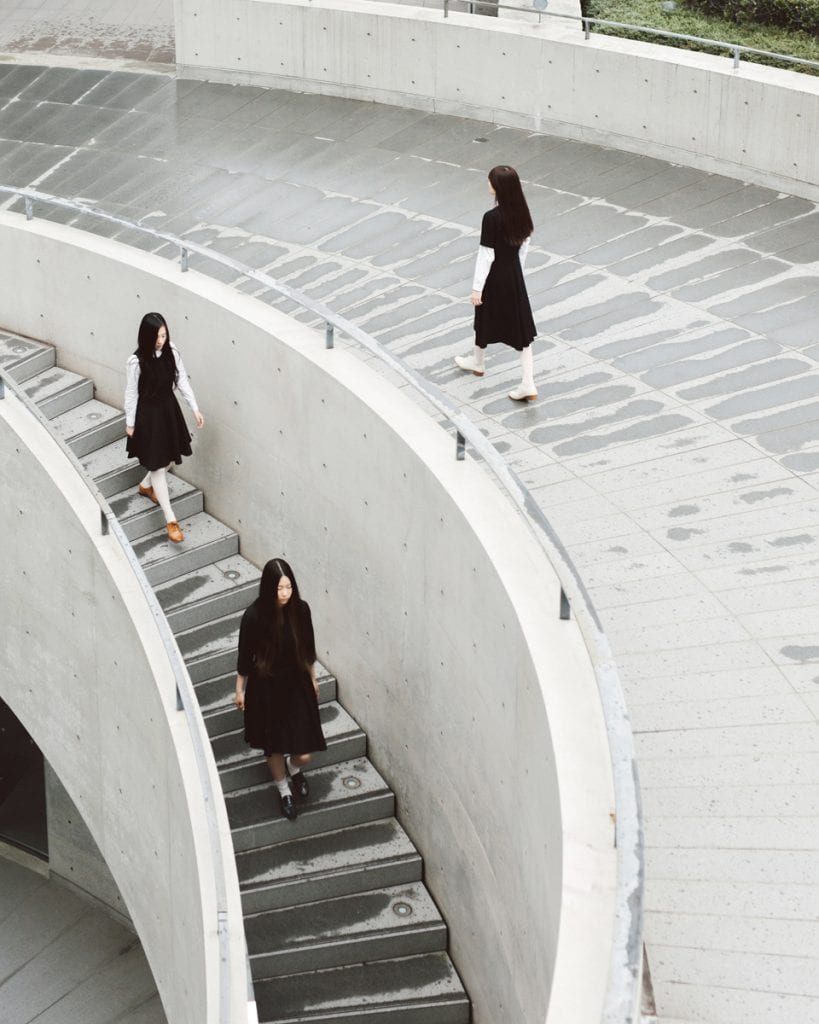In 1983, philosopher Gilles Deleuze published the first of two books on cinema. Within its pages, he expanded on the concept of “non-places” and “any-space-whatevers”: anonymous locations people pass through, as identified by anthropologist Marc Augé during studies of “super-modernity.” Supermarkets, airport terminals and metro stations are all examples. Artists from the Aesthetica archives build on such ideas, placing unnamed characters within abstracted buildings and landscapes: areas without coordinates.


In Going Against The Grain, Hyogo-born Hideaki Hamada explores the relationship between individuals and their surroundings. Four uniformed figures haunt open fields, concrete staircases and glass-fronted buildings in anonymity. Their unison is broken only by one outlier who walks in a different direction or faces another way. Commenting on globalisation and conformity, the Osaka-based photographer has been published in Kinfolk, Frame and The Big Issue Taiwan, amongst others.

Maia Flore describes her work as: “a study of the way my body, my first tool, reacts with the environment in which it is placed.” It involves a “journey-performance” through France – from the country’s easternmost coast through to the western border with Spain. The images are highly aesthetic, placing Flore’s body in both built and natural landscapes. Whilst faces are often hidden, the viewer is invited to find meaning in form and gesture, in how the body is located and contorted in various vistas.

Michelle Cho (b. 1992) & June Kim’s (b. 1990) collaborative series is inspired by architecture and geometry. Using photography and digital manipulation, the duo capture characters amongst anonymous and almost desolate sets. Individuals turn away from each other and embrace walls, circling around stairs and lying against the stonework in tandem, all the while mirroring one another. The highly choreographed images look like stills from a cyclical film – where the resolution is just out of reach.

Having moved between 30 countries in the last 10 years – New York-based May Parlar (b. 1981) has become interested in examining the human condition in relation to surrounding landscapes. The works instil a sense of the uncanny in the viewer; characters wander through realities as nomads rather than citizens. Balloons are suspended mid-air; ethereal desert planes host static figures that are swathed by bleach-white sheets; overgrown gardens swallow characters in mid-conversation.


Slovakian artist Natalia Evelyn Bencicova (b. 1992) crafts fictional scenarios in which anonymous figures create patterns of uniformity. Through stirring symmetry and cold, faded palettes, indistinguishable characters become part of the architecture. Leaning across bannisters and draping themselves against walls, these figures inhabit an unsettling world which depicts jarring relationships between organic and concrete forms, and personal autonomy versus a community mentality.





